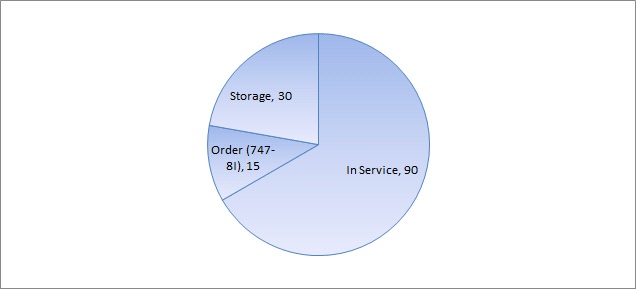The number of Boeing 747s operated by Asia Pacific carriers for passenger services has fallen below 100 examples, but the type remains the region’s premiere very large aircraft.
On 2 April All Nippon Airways (ANA) closed a chapter in aviation history when it retired its last 747-400.
Other major carriers in the region have also reduced their usage of the type in recent years, with Singapore Airlines retiring its last 747-400 in 2012.
According to Flightglobal’s Ascend Online Fleets database, however, the type still enjoys wider usage than the aircraft designed to replace it: the Airbus A380.
Ascend shows that there are 90 747s in service with Asia Pacific operators. Of these, 89 are 747-400s. A Bangkok-based charter operator still has a single 747-300 in service, a 31-year old example originally operated by JAL.
Ascend shows that 30 examples, mostly -400s with a handful of -300s, are in storage, with 15 747-8Is on firm order.
Asia Pacific 747 passenger fleet - April 2014

Ascend
Overall, the average age of the region’s passenger 747s is 19 years.
By contrast, there are 56 A380s in service with Asia Pacific operators, with an average age of just four years. The region’s carriers also have 37 A380s on order – roughly 20% of the A380’s global outstanding orderbook of 196 aircraft.
The biggest operator of the 747 in the region is Qantas Airways, with 23 examples on its books. Ascend shows that 14 of these are in service and seven in storage. Cathay Pacific, China Airlines, and Thai are other major users.
Despite the longevity of the 747-400 as a passenger aircraft, the future for today’s existing examples is bleak. In its V1Market Commentary for the type published in the first quarter of 2014, the Ascend Advisory team notes that the market value for a 2005 vintage aircraft stood at $31.5 million in January 2014, compared with $44.5 million a year earlier.
Freighter conversions are unlikely and four engines is a disadvantage in a high fuel price environment. Retirements are due to continue, with many examples now operated by Asian carriers due to be parted out.
Source: Cirium Dashboard
















